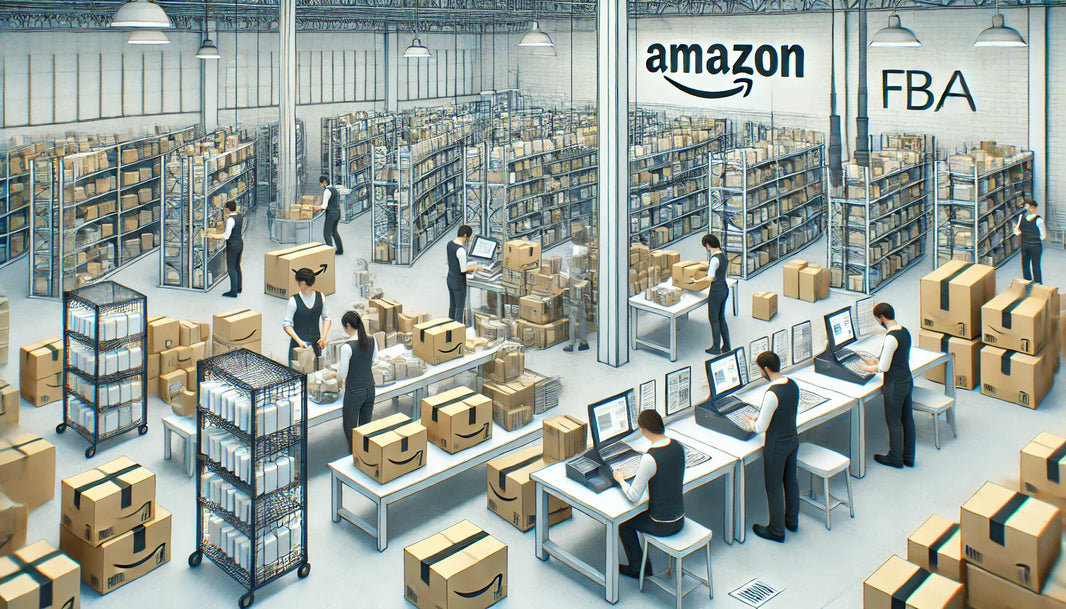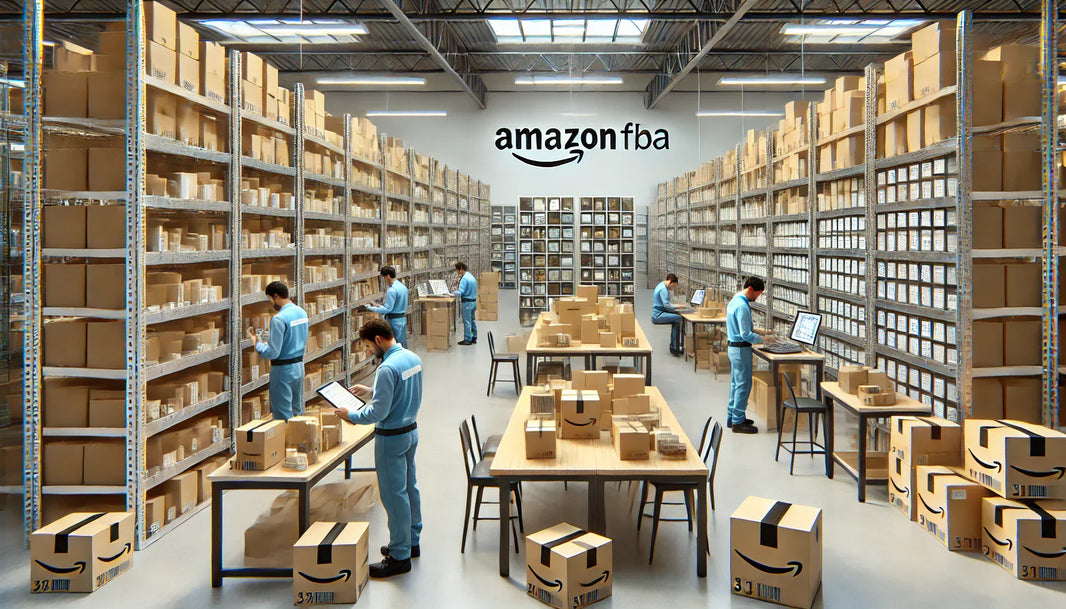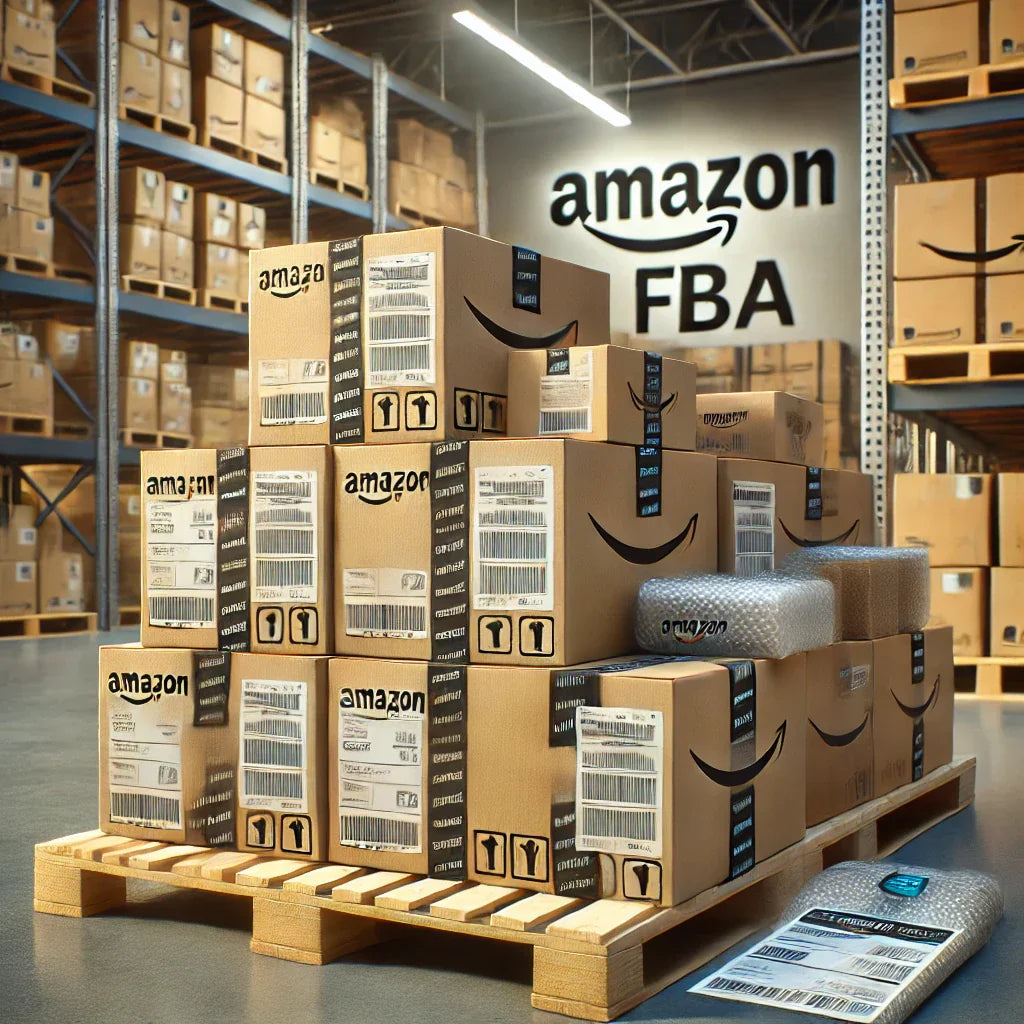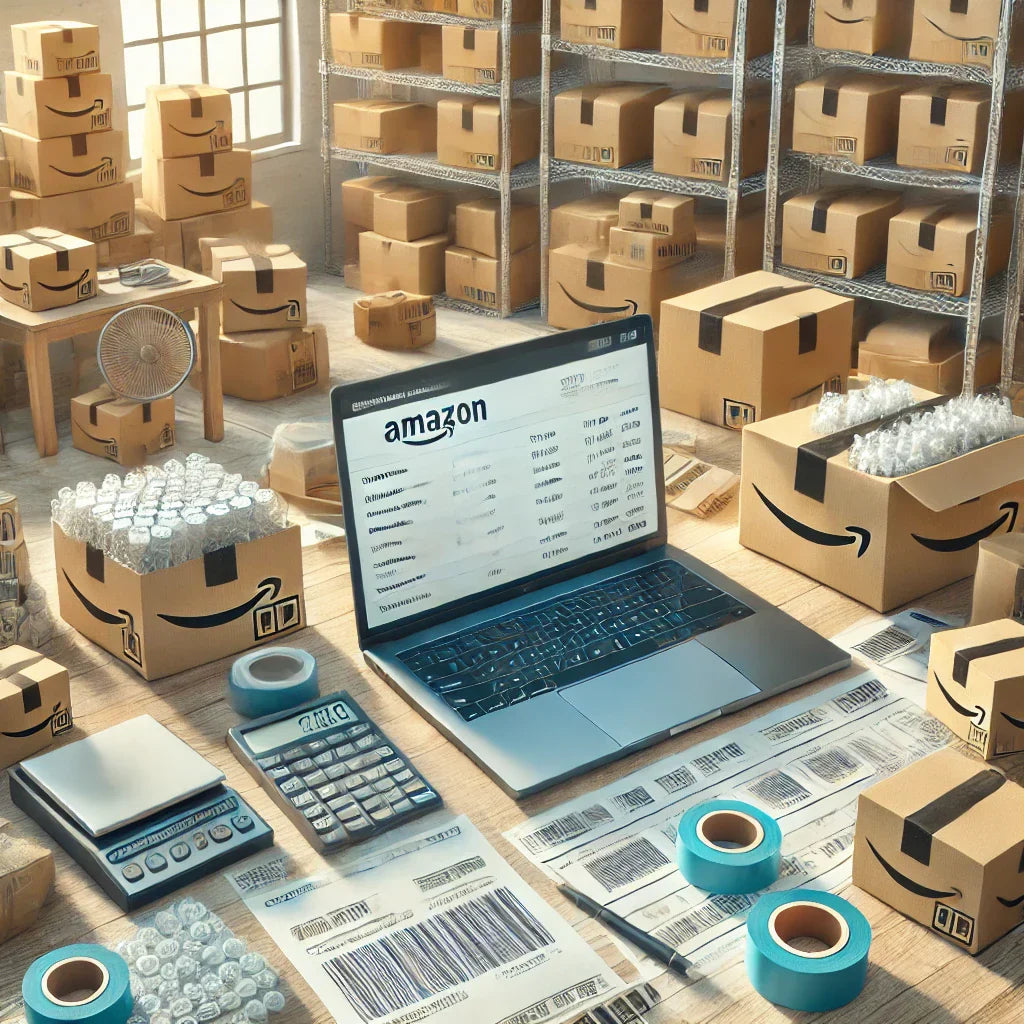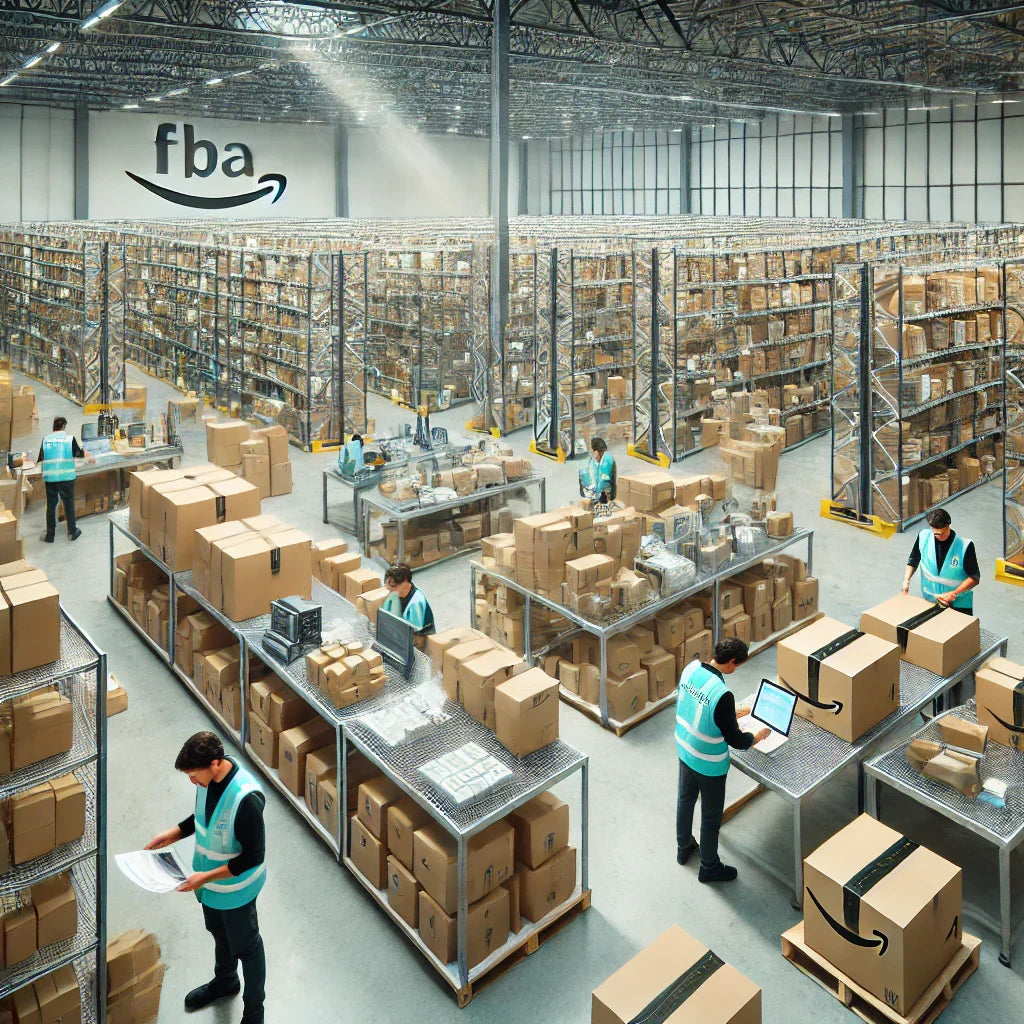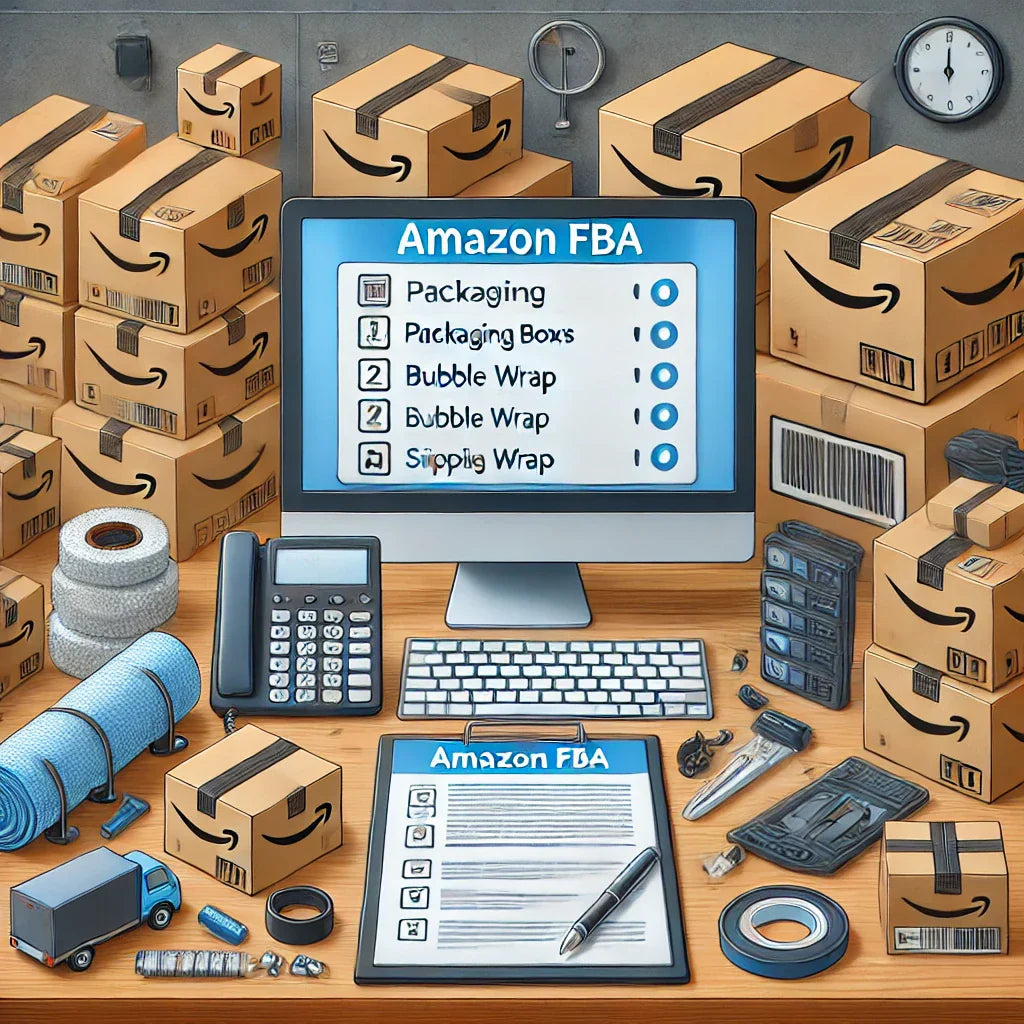Understanding the intricacies of 3PL (third-party logistics) pricing is essential for businesses aiming to manage their logistics and fulfillment costs effectively. From warehousing and order processing to FBA (Fulfillment by Amazon) prep and specialized services, each element of 3PL pricing can impact your overall logistics budget. This guide will break down what factors influence 3PL costs, explain common pricing models, and offer strategies to help you optimize and reduce expenses without compromising service quality.
Introduction to 3PL Pricing Models and Components
The role of third-party logistics providers has evolved significantly, offering businesses of all sizes access to sophisticated logistics networks, advanced inventory management, and scalable fulfillment solutions. However, 3PL pricing is not always straightforward. Each 3PL provider has a unique pricing structure based on the specific services they provide, which can range from basic warehousing to integrated supply chain management.
What Drives 3PL Pricing?
A variety of factors influence 3PL pricing. Key determinants include the volume of goods, the complexity of services required, the geographical scope of operations, and the duration of storage. Each service adds an incremental cost, which collectively forms the complete logistics expense.
Key Factors Impacting 3PL Pricing
Every 3PL service category has distinct cost components. Understanding these factors will help you anticipate expenses and make informed decisions.
Warehousing Costs
Warehousing is foundational to any 3PL service, encompassing storage space and inventory management. Pricing is typically based on the amount of space your inventory occupies. Warehousing costs may also vary based on the storage environment (e.g., climate control) and accessibility requirements, such as 24/7 inventory access.
Order Fulfillment Costs
Fulfillment includes picking, packing, and shipping orders. These costs can vary significantly depending on order volumes, packaging requirements, and shipping destinations. High-volume fulfillment often qualifies for discounted rates, while specialized packaging or fragile items may incur additional fees.
Inventory Management Fees
Inventory management involves keeping track of stock levels, reorder points, and SKU management. Many 3PL providers offer inventory control solutions that minimize stockouts and overstock situations. Fees are often associated with SKU volume, frequency of updates, and reporting needs.
Shipping and Transportation Fees
Shipping rates depend on destination, delivery speed, package dimensions, and weight. Domestic and international shipments are priced differently, with international shipments requiring customs processing and additional fees. Negotiating better rates is possible with higher shipping volumes or by selecting a specific carrier through your 3PL.
Value-Added Services
Value-added services (VAS) include special handling, returns management, product assembly, and customization. These services offer flexibility but add to logistics costs. For example, kitting (grouping items) or reverse logistics (returns) are popular VAS that cater to customer satisfaction and convenience but come with their own pricing structures.
Common 3PL Pricing Models Explained
Understanding common 3PL pricing models can help businesses select a provider that aligns with their needs and budget.
Cost-Plus Pricing
In this model, the 3PL provider calculates costs based on actual expenses, then adds a predetermined profit margin. This model is straightforward, as it itemizes costs and makes them transparent to the client, providing visibility into logistics expenses.
Transaction-Based Pricing
With transaction-based pricing, costs are assigned per order or activity. For instance, fees may apply per order picked, packed, or shipped. This model works well for businesses with fluctuating volumes, as costs are directly proportional to the workload.
Fixed Pricing
Fixed pricing is a flat-rate fee structure that includes a range of services at a predetermined cost. This model is beneficial for businesses that require consistent and predictable costs. However, it may limit flexibility if your needs change significantly over time.
Volume-Based Pricing
Volume-based pricing offers discounts for higher volumes. This model is effective for businesses that process large order volumes, as increased volume can reduce the per-unit cost.
Customized Pricing
For businesses with complex or specialized requirements, customized pricing is a tailored approach based on unique needs. While this approach offers flexibility, it requires thorough negotiation and collaboration with the 3PL provider to ensure the pricing aligns with specific service requirements.
Benefits of a Strategic 3PL Partnership
A partnership with a reliable 3PL provider can be transformative for a business’s logistics strategy. Beyond cost savings, an effective 3PL provider offers operational efficiencies, scalability, and enhanced customer experiences.
Cost Reduction and Efficiency
3PL providers operate at scale, giving them the ability to negotiate better shipping rates, streamline processes, and reduce redundancy. They can often handle logistics tasks more efficiently than an in-house team, helping businesses cut costs and optimize fulfillment.
Enhanced Scalability
As your business grows, a 3PL provider can scale its services to accommodate higher order volumes and expanding inventory. This scalability ensures that logistics support keeps pace with business growth without requiring major capital investments.
Focus on Core Competencies
By outsourcing logistics to a 3PL provider, businesses can focus on their core functions, such as product development, sales, and marketing. This delegation allows internal resources to focus on areas that directly impact revenue growth.
How to Optimize 3PL and Fulfillment Costs
Optimizing 3PL and fulfillment costs can directly impact profitability. Here are strategies to streamline your 3PL expenses effectively.
Evaluate Your Fulfillment Needs Regularly
Conduct regular assessments to understand the fulfillment needs of your business. Adjust your 3PL services based on seasonal trends, promotional events, or expansion plans. By aligning services with actual demand, you can avoid unnecessary costs.
Negotiate Customized Solutions
3PL providers often offer the flexibility to create custom packages based on specific needs. For example, if your business has unique storage requirements or only requires partial fulfillment support, negotiating a custom package can eliminate unnecessary expenses.
Leverage Volume Discounts
If your business processes high order volumes, negotiate with your 3PL provider for volume discounts. Many providers offer reduced rates for bulk orders, which can significantly lower the per-unit cost of logistics.
Invest in Demand Forecasting
Forecasting demand is crucial in avoiding stockouts or overstock situations, both of which can lead to increased logistics costs. Accurate forecasting helps your 3PL provider allocate resources effectively, avoiding rush fees or excess storage costs.
Optimize Shipping Zones
Many 3PL providers operate out of multiple warehouses, allowing you to ship from locations closer to your customer base. By optimizing shipping zones, you can reduce both shipping costs and delivery times, which can also improve customer satisfaction.
Streamline SKU Management
Efficient SKU management can help reduce logistics costs by minimizing the complexity of order fulfillment. Organize and simplify your SKU portfolio to avoid duplications and keep inventory easy to manage. Simplified SKU management can reduce handling time and errors, leading to lower costs.
Monitor Performance Metrics
Establish and track performance metrics, such as order accuracy, delivery speed, and return rates. Regular monitoring helps ensure that your 3PL provider meets service expectations and operates efficiently, reducing unnecessary costs and improving service quality.

Selecting the Right 3PL Provider for Your Business
The choice of a 3PL provider should align with your business’s logistics goals, product type, and customer expectations. Here are critical factors to consider when selecting a provider.
Assess Their Experience and Expertise
Different 3PL providers specialize in various sectors. For example, some providers excel in e-commerce fulfillment, while others specialize in B2B logistics. Selecting a provider with expertise relevant to your business ensures that they understand the unique logistics needs of your industry.
Evaluate Technology and Reporting Capabilities
Technology is integral to modern logistics, with 3PL providers offering tools that enhance tracking, inventory management, and reporting. Providers with advanced software solutions give businesses real-time visibility into stock levels, order processing, and delivery statuses, which is crucial for optimizing fulfillment.
Check Flexibility and Scalability
Select a provider that offers flexibility and scalability in their services. A flexible 3PL can adapt to seasonal fluctuations or business expansion without sacrificing service quality. Scalability ensures that logistics support can grow in tandem with your business, providing a consistent customer experience.
Consider Location Network
A 3PL provider with a geographically diverse network of warehouses can help reduce shipping times and costs. Evaluate the provider’s location network to see if it aligns with your customer base, which can improve service efficiency and optimize fulfillment costs.
Assess Customer Service Quality
Effective customer service is critical when issues arise, from damaged shipments to inventory discrepancies. A provider with a dedicated customer support team can quickly resolve problems, reducing the impact on your business.
The Future of 3PL: Trends to Watch
The logistics industry is evolving, with trends like automation, sustainability, and omnichannel logistics shaping the future of 3PL services. Staying informed about these trends can help businesses make forward-thinking decisions and enhance cost efficiency.
Automation in 3PL
Automation in 3PL is transforming logistics through robotics, AI, and machine learning. Automated systems reduce human error, accelerate order processing, and increase throughput, which can lead to reduced costs and improved fulfillment accuracy.
Emphasis on Sustainability
Many businesses and consumers are demanding eco-friendly logistics solutions. Sustainable practices, like eco-friendly packaging and carbon-neutral shipping, can align with consumer values and reduce logistics costs. By selecting a 3PL provider with a commitment to sustainability, businesses can achieve cost savings and a positive environmental impact.
Omnichannel Logistics
As businesses expand to multiple sales channels, omnichannel logistics ensures seamless fulfillment across all platforms. 3PL providers with omnichannel capabilities can streamline fulfillment, reducing logistics costs associated with managing multiple sales channels separately.
Leveraging Data Analytics to Control 3PL Costs
In today’s data-driven environment, 3PL providers offer analytics solutions that provide deeper insights into fulfillment patterns, inventory trends, and potential cost-saving opportunities. Understanding how to interpret and act on this data can be a game-changer in optimizing logistics costs.
Understanding Key Data Points
3PL providers track a wide range of metrics, including order volumes, average handling times, peak order periods, and more. By analyzing these metrics, businesses can make proactive adjustments. For instance, if data reveals a pattern of high returns during a particular season, you might adjust your inventory levels accordingly, preventing overstocking and reducing unnecessary warehousing costs.
Utilizing Predictive Analytics
Predictive analytics is becoming increasingly accessible within the logistics sector. Using historical data and machine learning, predictive models can anticipate demand fluctuations, allowing companies to adjust fulfillment volumes and optimize staffing accordingly. This proactive approach can significantly reduce costs by aligning 3PL services with real-time demand.
Real-Time Reporting for Quick Adjustments
Many 3PL providers now offer dashboards and reporting tools that provide real-time visibility into your logistics network. These tools allow for immediate adjustments, such as changing order processing priorities or redirecting shipments. The ability to make on-the-fly changes can help mitigate issues before they escalate into costly disruptions.
Case Studies in 3PL Optimization
Examining real-world examples of companies that optimized their 3PL relationships provides actionable insights into what works. Here are a few notable cases that illustrate successful strategies to control logistics costs.
Case Study: Optimizing Inventory with SKU Rationalization
A large e-commerce retailer partnered with a 3PL provider to reduce fulfillment costs through SKU rationalization. By analyzing data on slow-moving products, they identified SKUs that contributed little to overall sales but occupied significant storage space. Eliminating these items from their inventory reduced warehousing costs by twenty percent and improved picking and packing efficiency.
Case Study: Reducing Last-Mile Delivery Expenses
A consumer goods company faced high last-mile delivery costs due to increased customer demand for faster shipping. By leveraging a 3PL provider’s distributed warehouse network, they were able to reduce delivery distances, lowering both shipping times and costs. Through strategic warehouse placement and delivery route optimization, they achieved a fifteen percent reduction in last-mile expenses.
Case Study: Seasonal Staffing and Demand Forecasting
A fashion retailer that experienced seasonal surges in demand collaborated with its 3PL provider to implement demand forecasting and seasonal staffing. By analyzing historical sales data, they accurately projected peak periods and adjusted their staffing needs accordingly, avoiding the costs associated with hiring permanent staff or paying overtime. This approach reduced fulfillment costs by over ten percent during high-demand periods.
Advanced Tips for Negotiating 3PL Contracts
Negotiating effectively with a 3PL provider can lead to substantial savings over time. Here are some advanced strategies to consider when entering or renewing a 3PL contract.
Request Transparent Itemized Pricing
One common challenge with 3PL pricing is the lack of transparency in bundled costs. Request a detailed breakdown of each service in the pricing structure. This approach clarifies where funds are allocated, which can help in identifying areas for negotiation or potential cost reduction. For example, if warehousing fees are bundled with fulfillment, you may find that separating these costs results in savings.
Implement Performance-Based Clauses
Consider adding performance-based clauses to your 3PL contract. By setting benchmarks around order accuracy, shipping times, and customer satisfaction, you create a framework that rewards efficiency and penalizes underperformance. Many companies find that these clauses motivate providers to meet or exceed service levels, which in turn minimizes expenses associated with error correction and delays.
Include Flexibility for Growth and Market Changes
A 3PL contract should be flexible enough to accommodate changes in your business. As your company grows, you may need additional services, higher volumes, or new shipping lanes. Negotiate clauses that allow for these adjustments without penalizing fees. This ensures that your contract evolves alongside your business, maintaining cost-effectiveness over time.
Integrating Technology for Smarter 3PL Management
Technology is transforming the logistics landscape, enabling businesses to optimize their 3PL operations in new and innovative ways. By leveraging technology, you can enhance efficiency, reduce errors, and ultimately lower costs.
Warehouse Management Systems (WMS)
A robust warehouse management system (WMS) helps improve inventory tracking, picking accuracy, and space utilization. Many 3PL providers offer WMS integration, allowing businesses to monitor inventory and automate stock replenishment. These systems not only reduce the likelihood of stockouts but also help minimize costs associated with overstocking and excess storage.
Transportation Management Systems (TMS)
Transportation management systems provide real-time tracking and route optimization, helping businesses control shipping costs. Many TMS solutions can integrate with carriers and automate tasks like label printing and scheduling. Optimizing routes and consolidating shipments through TMS can result in significant transportation savings.
Automation and Robotics in Fulfillment Centers
Automation is rapidly advancing in the 3PL industry. Robotics and automated sorting systems speed up picking, packing, and sorting processes, which reduces labor costs and improves order accuracy. By partnering with 3PL providers that use these technologies, businesses can benefit from faster fulfillment without incurring high operational costs.
Mitigating Hidden Costs in 3PL Services
3PL contracts can sometimes contain hidden fees that inflate logistics costs. Recognizing these potential expenses and negotiating terms around them can keep your budget in check.
Handling Fees for Returns and Repacking
Returns handling can incur fees that many businesses overlook. If your industry experiences high return rates, understanding the cost structure for returns processing, restocking, and repacking is essential. Negotiating favorable terms or fixed rates for these services can prevent unexpected cost surges.
Minimum Order or Volume Requirements
Some 3PL providers impose minimum volume or order requirements that could lead to additional charges if not met. Ensure that these minimums align with your average volumes to avoid penalties. For seasonal businesses, negotiating lower minimums during off-peak times can be particularly beneficial.
Excess Storage Fees
If inventory stays in storage beyond an agreed-upon timeframe, some 3PL providers charge excess fees. Review the terms carefully and consider renegotiating the storage limits if your products require long-term storage. This approach can help prevent escalating costs, especially if you’re operating in a market with fluctuating demand.
![]()
Exploring Alternative 3PL Pricing Models
For some businesses, traditional 3PL pricing models may not be the most cost-effective solution. Exploring alternative pricing structures can lead to better alignment with your financial goals and logistics needs.
Subscription-Based Pricing
Subscription pricing offers a fixed monthly rate that covers a range of services. This approach is ideal for businesses seeking predictability in logistics costs, as it stabilizes monthly expenses. However, it’s essential to ensure the package aligns with your usage, as overpaying for underutilized services can negate the cost benefits.
Activity-Based Costing (ABC)
Activity-based costing (ABC) assigns costs to specific activities within the fulfillment process, such as picking, packing, and shipping. ABC provides granular cost visibility, enabling businesses to pinpoint areas where expenses can be trimmed. This model is well-suited for businesses with diverse product ranges or varied handling requirements, as it adjusts based on the specifics of each order.
Hybrid Models
Hybrid pricing combines elements of different pricing models to create a tailored solution. For example, a hybrid model might include volume-based discounts for warehousing combined with transaction-based pricing for order fulfillment. This approach gives businesses flexibility in managing costs while leveraging the advantages of multiple pricing structures.
Future-Proofing Your 3PL Strategy
With rapid advancements in logistics technology and changing consumer demands, businesses must future-proof their 3PL strategy to stay competitive. Anticipating shifts in logistics and adopting adaptable practices can safeguard against unexpected costs and improve long-term efficiency.
Embracing Flexible Warehousing Solutions
Flexible warehousing allows businesses to adapt to changing demand without long-term storage commitments. Some 3PL providers now offer on-demand warehousing, which enables companies to access storage space as needed. This flexibility can be invaluable for seasonal or promotional surges, preventing the costs associated with maintaining excess storage space during slower periods.
Building Resilience into Your Supply Chain
The COVID-19 pandemic highlighted the importance of a resilient supply chain. Building resilience through diversified suppliers, alternative transportation routes, and emergency protocols can prevent costly disruptions. Partnering with a 3PL provider that supports these resilience strategies can ensure consistent service even during market volatility.
Integrating Sustainable Practices
Sustainability is increasingly essential in logistics, not only to meet consumer expectations but also as a way to reduce costs. Many 3PL providers now offer carbon-neutral shipping options, eco-friendly packaging, and sustainable warehousing practices. By prioritizing sustainability, businesses can benefit from cost savings, regulatory compliance, and brand loyalty.
Preparing for the Rise of Direct-to-Consumer (DTC) Fulfillment
With the growth of direct-to-consumer sales, DTC fulfillment has become a priority for many brands. Working with a 3PL provider that specializes in DTC fulfillment can streamline this process, enhancing customer satisfaction while controlling costs. DTC fulfillment often involves shorter delivery times, real-time tracking, and higher order accuracy, all of which can influence your 3PL pricing strategy.
Understanding the Complexities of Fulfillment Costs
Fulfillment costs encompass several elements, each contributing to the overall logistics budget. Recognizing the nuances in fulfillment pricing can help businesses choose the best services for their needs and avoid unexpected expenses.
Picking and Packing Fees
Most 3PL providers charge per order or per item for picking and packing, with fees based on factors such as order complexity, product fragility, and packaging requirements. Businesses that deal with bulky items or require customized packaging might incur higher fees, so it's essential to assess your specific picking and packing needs when evaluating providers.
Shipping Discounts and Carrier Rates
A significant portion of logistics costs is derived from shipping. Many 3PL providers have established relationships with major carriers and offer discounted rates based on shipment volume. It’s advantageous to partner with a 3PL that can secure favorable rates through carrier partnerships, especially if your business frequently ships internationally or in high volumes.
Custom Packaging and Branding
Custom packaging can elevate brand recognition and improve the customer unboxing experience, yet it often comes at a higher cost. For businesses that prioritize brand image, discussing custom packaging rates upfront can help avoid unforeseen charges. Many 3PL providers offer various packaging options, from basic to premium, so balancing cost with brand requirements is key.
Return Management
Return management, or reverse logistics, is a necessary but often costly aspect of fulfillment, especially in sectors like fashion or electronics with high return rates. A streamlined return process enhances customer satisfaction but may require additional handling, inspection, and restocking fees. Look for a 3PL provider that offers efficient, cost-effective returns processing if returns are a significant part of your business.
Industry-Specific Considerations for 3PL Costs
Different industries face unique logistics challenges, and 3PL costs can vary accordingly. By understanding industry-specific factors, businesses can optimize their logistics setup more effectively.
E-commerce and DTC Brands
For e-commerce and direct-to-consumer (DTC) brands, speed and accuracy are crucial. 3PL providers serving these industries often prioritize fast shipping, real-time tracking, and flexible packaging solutions. Pricing structures may include volume discounts for high-order volumes, multi-channel fulfillment options, and order bundling to optimize delivery costs.
Food and Beverage
Food and beverage companies require temperature-controlled storage and compliance with strict health and safety regulations. Consequently, these businesses may incur higher costs for climate-controlled warehousing, hygiene audits, and compliance documentation. Partnering with a 3PL provider experienced in food logistics ensures regulatory compliance while maintaining cost-efficiency.
Electronics and High-Value Goods
Electronics and other high-value goods need secure storage, anti-theft measures, and precise inventory management to prevent losses. Specialized handling, secure warehousing, and insured transportation can increase logistics costs. However, these measures are essential for protecting high-value products and avoiding the financial impact of theft or damage.
Apparel and Fashion
Apparel logistics often include seasonal surges, high return rates, and SKU complexity, especially in the case of multi-size and multi-color products. 3PL providers specializing in fashion may offer flexible storage solutions, efficient return processing, and order bundling to handle high volumes efficiently.
In-Depth Optimization Strategies for 3PL Costs
Beyond negotiating rates, there are numerous strategies to further optimize 3PL costs and improve the efficiency of your logistics operations.
Analyzing Order Profiles for Cost Efficiency
Examining order profiles helps identify trends, such as peak demand periods, popular items, and regional preferences. For instance, if certain SKUs are frequently ordered together, you could consider bundling them as a single package. This not only reduces picking and packing fees but also minimizes the shipping costs associated with multiple shipments.
Streamlining Packaging to Reduce Shipping Costs
Reducing packaging size and weight can yield substantial savings, especially when using dimensional weight-based shipping rates. Work with your 3PL provider to identify ways to reduce packaging materials without compromising product protection. Minimal packaging not only reduces costs but also aligns with sustainability initiatives, appealing to eco-conscious consumers.
Conducting Regular Audits of 3PL Invoices
Regular invoice audits ensure that billing aligns with agreed-upon rates and services. Discrepancies can occur if there’s a change in shipping rates, fulfillment volumes, or unexpected surcharges. By regularly reviewing 3PL invoices, businesses can catch and address overcharges promptly, avoiding unnecessary expenses.
Engaging in Collaborative Forecasting with Your 3PL
Collaborative forecasting involves working with your 3PL provider to anticipate demand based on historical data, upcoming promotions, and seasonal trends. This alignment allows your 3PL to optimize staffing, resources, and storage, minimizing the costs associated with unanticipated fluctuations.
Key Performance Indicators (KPIs) for Effective 3PL Management
Tracking the right KPIs allows businesses to evaluate 3PL performance and identify areas for improvement. Here are some of the most important KPIs to monitor.
Order Accuracy Rate
Order accuracy measures the percentage of orders fulfilled correctly. Mistakes in picking, packing, or shipping can lead to return handling costs and damage to customer satisfaction. Monitoring order accuracy helps ensure that your 3PL is meeting expected service levels.
On-Time Shipping Rate
On-time shipping is a critical KPI, especially for e-commerce brands where timely delivery impacts customer experience. An on-time rate close to 100 percent indicates that the 3PL provider is managing fulfillment efficiently, while a lower rate suggests delays that could incur additional expenses.
Inventory Turnover
Inventory turnover reflects how quickly products are sold and replenished. A high turnover rate indicates effective inventory management, reducing storage costs and minimizing the risk of outdated stock. Monitoring this KPI can help businesses optimize stock levels and identify slow-moving items.
Return Rate and Return Processing Time
A high return rate can signal quality issues, while an efficient return processing time indicates that the 3PL provider handles returns effectively. Monitoring both metrics is essential for managing reverse logistics costs and maintaining customer satisfaction.

Emerging Trends in 3PL and Fulfillment
Keeping up with logistics trends can help businesses stay competitive and make informed decisions about 3PL partnerships. Here are some emerging trends reshaping the logistics landscape.
Rise of Micro-Fulfillment Centers
Micro-fulfillment centers are small, strategically located facilities designed for rapid delivery. By partnering with 3PL providers that offer micro-fulfillment, businesses can shorten delivery times and reduce shipping costs. Micro-fulfillment is particularly advantageous in urban areas where same-day or next-day delivery is a priority.
Adoption of Artificial Intelligence and Machine Learning
AI and machine learning are transforming inventory forecasting, route optimization, and even customer service within the logistics industry. 3PL providers that leverage AI can predict demand more accurately, optimize delivery routes, and automate routine tasks, ultimately lowering costs and enhancing service quality.
Robotics and Automation in Warehousing
Warehouse automation using robots and AI-driven systems has revolutionized order picking and packing. Automated systems reduce reliance on manual labor, minimize errors, and increase order fulfillment speed. Partnering with a 3PL that uses automation can lead to faster, more cost-effective logistics.
Eco-Friendly and Carbon-Neutral Shipping Solutions
Sustainability is increasingly important for consumers and businesses alike. Many 3PL providers now offer eco-friendly options, such as carbon-neutral shipping, recyclable packaging, and electric delivery vehicles. While sustainable solutions might have higher upfront costs, they can lead to long-term savings by reducing waste and appealing to eco-conscious consumers.
Blockchain for Transparent Supply Chains
Blockchain technology enhances transparency and traceability in supply chains. By recording each transaction and shipment detail, blockchain allows businesses to verify the origins of goods and prevent fraud. Blockchain adoption in logistics is growing, with many 3PL providers exploring its potential for increased security and accountability.
Advanced Cost-Saving Techniques in 3PL
Businesses that have established a solid foundation with their 3PL provider can explore advanced cost-saving strategies to drive further efficiency.
Demand Shaping and Dynamic Pricing
Demand shaping involves adjusting pricing or promotion strategies to influence demand in ways that align with logistics capabilities. For instance, offering discounts on overstocked items can help reduce warehousing costs. Similarly, dynamic pricing during peak seasons can mitigate the costs associated with rapid inventory turnover and labor surges.
Consolidating Shipments
For businesses that frequently ship items to the same geographic area, shipment consolidation can yield substantial savings. Consolidation reduces the number of individual shipments and optimizes load capacity, lowering per-unit shipping costs. Discuss shipment consolidation options with your 3PL provider to identify cost-saving opportunities.
Drop Shipping as a Complementary Solution
For certain products, drop shipping can reduce the need for warehousing and fulfillment. Drop shipping allows you to ship products directly from the supplier to the customer, eliminating intermediate logistics costs. When strategically implemented, it can supplement your 3PL partnership, providing flexibility and reducing storage costs.
Implementing Tiered Service Levels for Different Customer Segments
Offering different service levels based on customer segments can optimize logistics costs without sacrificing service quality. For example, premium customers may receive expedited shipping, while standard customers receive regular service. By adjusting fulfillment speed based on customer preferences, you can allocate 3PL resources more efficiently.
Building a Resilient and Flexible 3PL Strategy
Establishing a resilient, adaptable 3PL strategy is crucial in today’s dynamic market, where disruptions can have major cost implications. By creating a flexible logistics plan with your 3PL provider, you can adapt more easily to shifts in demand, supply chain delays, and unexpected events.
Diversifying 3PL Providers for Risk Management
Many businesses rely on a primary 3PL provider, but working with multiple providers can add resilience. By diversifying across two or more 3PL providers, especially in different regions, you reduce dependency on a single entity. This approach also enables you to adapt quickly if one provider encounters issues, ensuring continuity and potentially lowering costs through competitive pricing.
Implementing Contingency Plans
Supply chain disruptions—from natural disasters to economic fluctuations—can drive up logistics costs quickly. A robust 3PL strategy includes contingency plans that account for potential disruptions. Work with your 3PL provider to develop alternative shipping routes, backup storage options, and emergency protocols. Contingency planning minimizes unexpected expenses and keeps logistics operations running smoothly under pressure.
Planning for Seasonal Adjustments
If your business experiences seasonal fluctuations, such as peak sales during holidays, it’s essential to prepare well in advance. Your 3PL provider can help with seasonal staffing, additional storage, and faster shipping options. Planning for these seasonal adjustments not only ensures efficient service but can also secure volume-based discounts and avoid the higher costs of last-minute arrangements.
The Role of Technology in Cost-Effective 3PL Management
Leveraging technology in 3PL management can streamline operations and reduce costs significantly. From real-time tracking to automated reporting, technology enhances visibility, efficiency, and communication with your 3PL provider.
Integrating Inventory and Order Management Systems
For businesses managing high inventory volumes, integrating an inventory management system with your 3PL’s platform ensures real-time updates on stock levels, order status, and shipping information. This integration reduces errors associated with manual tracking, minimizes stockouts, and prevents over-ordering, leading to substantial cost savings over time.
Data Sharing for Improved Decision-Making
Collaborating on data with your 3PL provider can lead to more informed logistics decisions. By sharing data related to demand forecasts, shipping patterns, and customer behavior, both parties can work together to optimize processes. Data-driven insights enable your 3PL to allocate resources more effectively, resulting in improved cost-efficiency.
IoT and Real-Time Tracking Solutions
The Internet of Things (IoT) is transforming 3PL logistics by providing real-time tracking through connected devices. Using IoT-enabled tracking systems, businesses can monitor shipment locations, temperature (important for perishables), and other conditions. This visibility allows you to make proactive adjustments if issues arise, reducing costs linked to delays or compromised goods.
Sustainable Logistics: Balancing Cost with Environmental Responsibility
In recent years, sustainability has become a top priority for many businesses, especially as consumers increasingly expect eco-friendly practices. However, sustainable logistics doesn’t have to mean higher costs; it can actually offer long-term savings and enhance brand reputation.
Green Warehousing and Facility Operations
Green warehousing involves using energy-efficient lighting, renewable energy sources, and optimized heating and cooling systems in storage facilities. Many 3PL providers now offer eco-friendly warehouses, which can lower costs over time by reducing energy consumption. Green initiatives also align your brand with sustainable values, which can be a competitive differentiator.
Carbon-Neutral Shipping Options
Some 3PL providers now offer carbon-neutral shipping, where they offset emissions by investing in renewable energy projects or purchasing carbon credits. While there may be a small additional cost for carbon-neutral shipping, this option appeals to eco-conscious consumers and can enhance brand loyalty. In the long term, businesses can also reduce logistics costs by streamlining shipments and lowering fuel consumption.
Using Recyclable and Minimal Packaging
Recyclable and minimal packaging reduces both waste and shipping costs. When working with a 3PL provider, you can request packaging solutions that are lightweight, compact, and recyclable. This approach not only reduces the environmental footprint but also minimizes dimensional weight charges, offering cost savings with every shipment.

Conclusion
A strong understanding of 3PL pricing and cost optimization can significantly impact a business's bottom line. With the right approach, businesses can turn 3PL partnerships into competitive advantages, effectively managing logistics costs, enhancing scalability, and improving customer experiences. By leveraging advanced technologies, negotiating favorable terms, and continuously monitoring performance, companies can maximize the value derived from their 3PL relationships and stay ahead in a rapidly evolving logistics landscape.
Read More
- What is 3PL? A Comprehensive Guide to Third-Party Logistics Services
- The Benefits of 3PL: Why Your Business Should Consider Third-Party Logistics
- 3PL vs. 4PL: Understanding the Differences and Choosing the Right Solution
- How to Choose the Best 3PL Provider for Your Business Needs
- The Future of 3PL: Trends and Innovations in Third-Party Logistics
- Common Challenges in 3PL and How to Overcome Them


